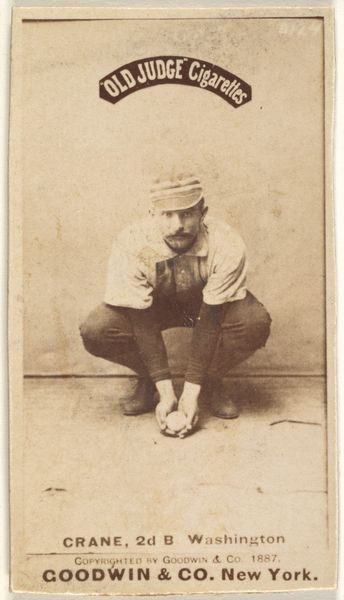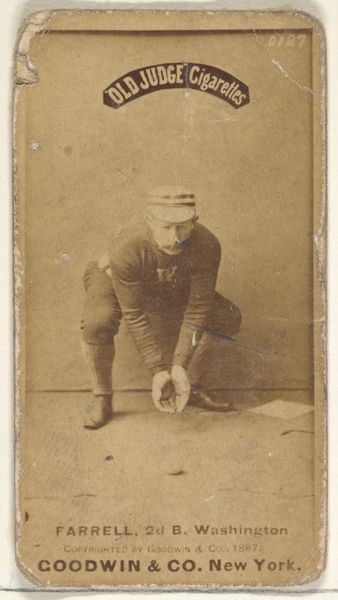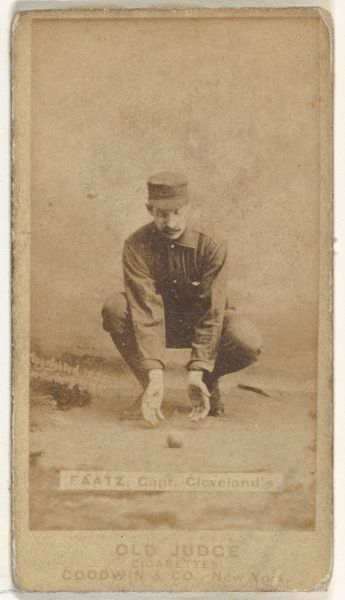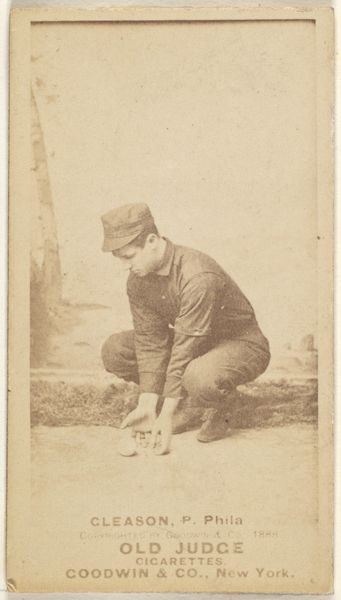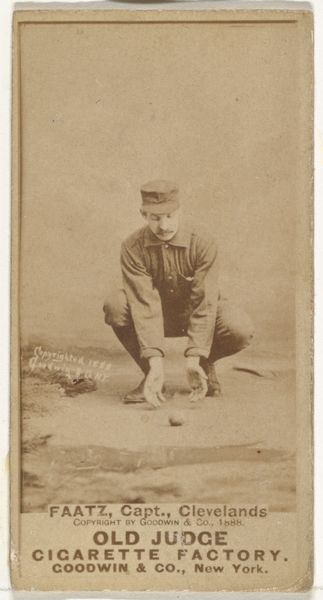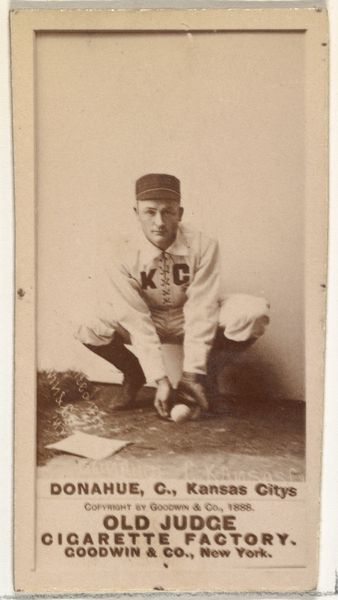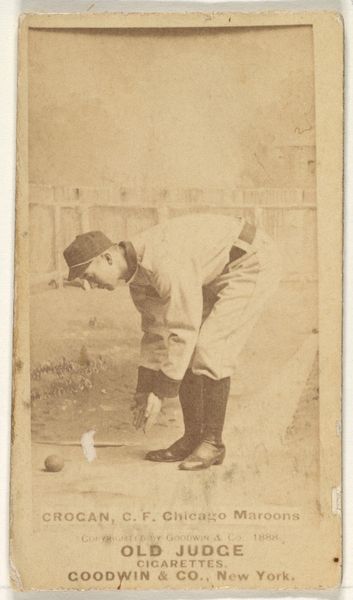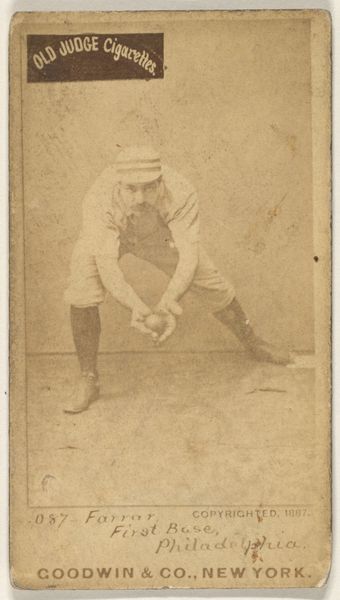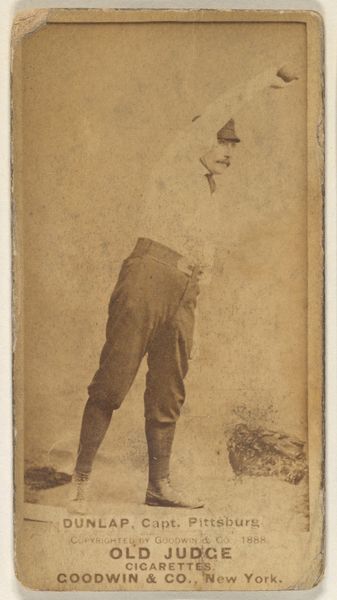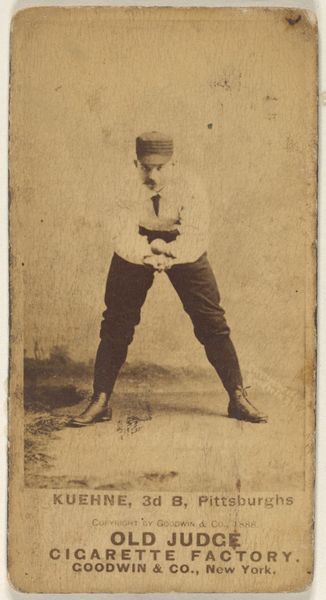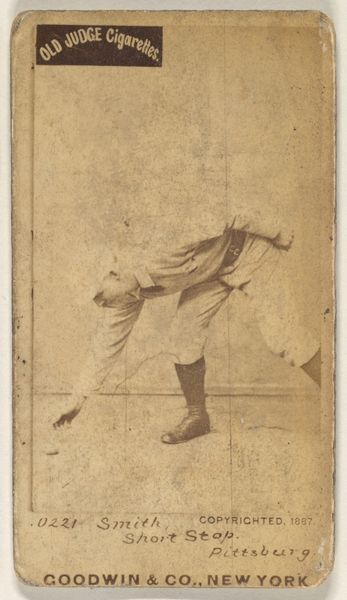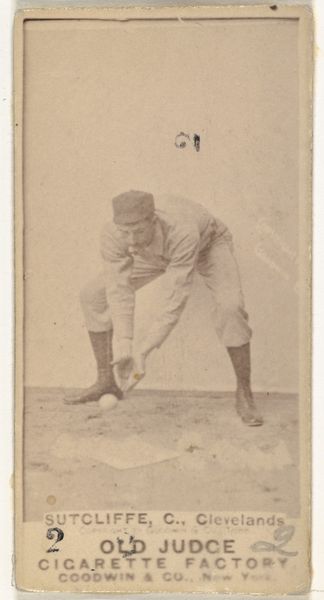
Bill Kuehne, 3rd Base, Pittsburgh, from the Old Judge series (N172) for Old Judge Cigarettes 1888
0:00
0:00
print, photography
#
portrait
# print
#
impressionism
#
baseball
#
photography
#
men
#
athlete
Dimensions: sheet: 2 11/16 x 1 3/8 in. (6.9 x 3.5 cm)
Copyright: Public Domain
Curator: I find this portrait so compelling! Goodwin & Company's print, “Bill Kuehne, 3rd Base, Pittsburgh,” from 1888 exudes such a specific, bygone atmosphere. Editor: There's definitely a melancholy feel to it, isn't there? The sepia tones contribute to a sense of faded glory, a memory clinging to the edges of relevance. Curator: Goodwin & Company, as the producer, was not aiming for high art here. These images were commercial, intended to be collected as cards tucked into Old Judge Cigarette packets. But it is indeed a powerful example of impressionism via early photographic reproduction, isn’t it? Notice the pose of the subject, captured with such dynamism in what would be regarded a static photograph now. What visual stories does it evoke? Editor: The fact that baseball cards were originally advertisements is ripe for interpretation, isn’t it? They reveal how intertwined American identity has become with consumerism and the idealization of masculine figures, like Bill Kuehne here. In a very practical sense, baseball served a safety valve, if you will, for turn-of-the-century societal tensions pertaining to class and gender. I see Kuehne's confident gaze here as part of that broader societal narrative, speaking directly to notions of strength, resilience, and a kind of idealized, perhaps unattainable, American masculinity. Curator: Absolutely. But there's also a fragility suggested, don’t you think? Look closely. It's a rather faded photograph, after all. And the player’s garb is already dated, belonging to the late 19th century. And there is textual evidence on the card that ties him into “Old Judge Cigarette Factory," as it were. I'm drawn to the way the sepia tone mutes everything, giving the portrait a feeling of memory, of loss, but also of idealized cultural symbol. The player himself recedes to give space to a greater symbolic role that speaks of America. Editor: I agree. And the portrait, its symbolism, transcends mere product marketing through its capture of both historical period and an intersectional symbol of early capitalism, sports, and patriarchy. I cannot but feel a slight twinge for future interpretations that speak directly to themes such as gender and political tensions, class, and corporate interests! Curator: Indeed! In art historical symbolism we often seek echoes—visual connections across time and cultures. Thank you.
Comments
No comments
Be the first to comment and join the conversation on the ultimate creative platform.

